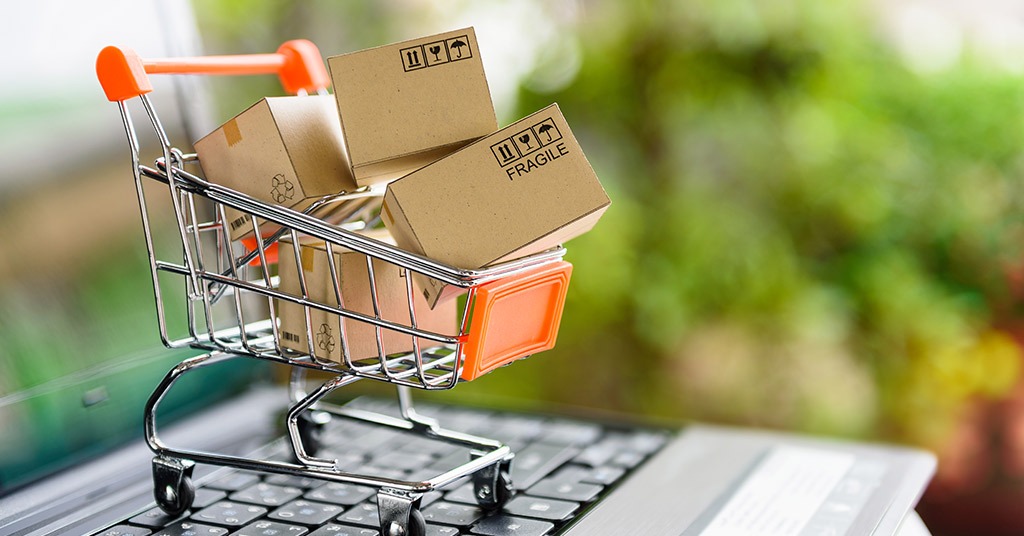Find out what is omnichannel retailing and how efficient is it

How to optimize your business for omnichannel retailing. Source: shutterstock.com
There was a time when merchants realised that customers have little free time during normal working hours, so they created online shops to attract more buyers. At some point, it became so popular that many businesses adopted an e-only business model. However, it wasn’t very profitable.
Clients are still human. In most cases, they need to see the goods with their own eyes, feel the fabric, weigh an object in their hands, try something on, test or to smell a product. They also often need a human touch, some help in selection, help with the size, advice about the color alternatives, etc. Sometimes they need to ask if a dress suits or if the vegetables are fresh. At the same time, people still want their payment, delivery, and return options to be flexible, smooth, and hi-tech.
That’s right, serving customers is tricky, but merchants keep looking for the best solution. Omnichannel is the new black these days.
What’s omnichannel shopping?
This shopping model presupposes a combination of online, mobile, and in-store experiences. As opposed to the usual multi-channel approach, those parts of shopping do not merely co-exist in the same ecosystem. They are highly integrated. For instance, people can come to the store to try some clothes on before making the purchase, later they carry out a transaction online, as the e-store or mobile app brings them additional bonuses or discounts. If they decide to return a product or exchange to another size/color/model etc., they can do it both in-store or arrange the deal via the web-interface. Clients can select and book an item online, before coming to the store to examine it, pick up, and make a payment with their mobile wallet. They can pay in-store and receive money back within an app in case of a return. The examples can be numerous. The important thing is that financial gateways and payment processors should be flexible for a diverse and rewarding shopping experience.

Social media has also become an integral part of the system. Source: shutterstock.com
Social media has also become an integral part of the system. They can be used for orders, communication with customer service representatives, advertising, and even payments. Think about Instagram’s retail shopping channel Checkout, Facebook Pay, Twitter’s Buy button, or Google testing shoppable ads via its image search.
How efficient that is
To begin with, the majority of buyers already use multiple channels for shopping, whether you want it or not. Back in 2017, research revealed that only 27% of shoppers used a single shopping point (7% online and 20% in-store). The remaining 73% were omnichannel consumers.
Those omnichannel consumers cherish comfort very much. 86% of buyers are willing to pay more for great customer experience and 65% find a positive experience with a brand to be more influential than great advertising (Source: Temkin Group). Hence, the seamless integration of all shopping channels brings more profits.
Moreover, companies with strong omnichannel customer engagement retain on average 89% of their customers, compared to 33% for companies with weak omnichannel customer engagement. Loyal clients are the best corporate assets, a source of powerful feedback, insights, and recommendations. That’s a key aspect of both corporate improvements and a growing customer base. Consumers who interact with online reviews and opinions are 97% more likely to convert with a retailer.
As we switch between a few devices every hour at work, home, or any other environment, 60% of millennials expect a consistent experience from brands whether they interact online, in-store or via phone (SDL).

Millennials expect a consistent experience whether they interact online, in-store or via phone. Source: shutterstock.com
Consistency is crucial in communication. Disputes and issues with quality always happen. People get irritated when they have to explain their problems numerous times. 37% now expect to be able to contact the same customer service representative regardless of which channel they use and 47% expect to be able to return goods through a different channel than the one used for purchasing (Zendesk).
When it comes to marketing, omnichannel is also a winner. Customers who interacted with three or more channels bought 250% more frequently than customers who only engaged with one channel. Their experience could be better-personalised since AI-driven ads get more precision after gathering customer’s search choices and purchase information from multiple channels.
What aspects should retailers mind
Optimising your business for an omnichannel retail outlet means
- Understanding consumer behaviour in great detail.
Analyse your target audience and your products. Use AI to collect and structure their location, demographics, web browsing habits and their shopping preferences. The information collected can help enhance the quality of digital user experience and increase cross-device conversions. It will make you understand how a strong online retail presence should be backed by a large inventory and supply chain network, which promotions convert to more sales, whether your logistics services are efficient, which locations are the best for brick-and-mortar stores, etc.
- Creating a seamless payment experience.

What is 3DS2 and why you need to know about it. Source: shutterstock.com
Having a smooth payment solution that applies both online and offline is essential. Common API gives customers more freedom in when and how they pay. Personalised, one-click shopping carts offer a great choice in payment flexibility and remember customers’ details such as address and payment method to provide a speedy checkout experience. It’s necessary that the data collected via one channel is automatically stored for further purchases using other shopping methods. Overall, it’s important to ensure a smooth transition between channels and make it recognisable for customers. It feels safe for the shopper if it looks and works the same way across the entire shopping network.
- Implementing a multi-point inventory management system.
An efficient order management system unifies inventory pools across all sales channels and aggregates orders for optimised delivery. This prevents fulfilment errors and speeds up item deliveries. All your stocks can be quickly reorganised according to customer demand recorded via multiple channels.
- Employing omnichannel marketing strategies.
A consistent brand image and the same messages across all channels ensure a heightened sense of familiarity and relationship with the brand. Marketers implementing an omnichannel marketing strategy must ensure that all internal departments are on board with the corporate vision. For example, PR, customer success, social media and sales teams, must all be portraying a consistent message to ensure the strategy implementation is successful.
SEE ALSO:









